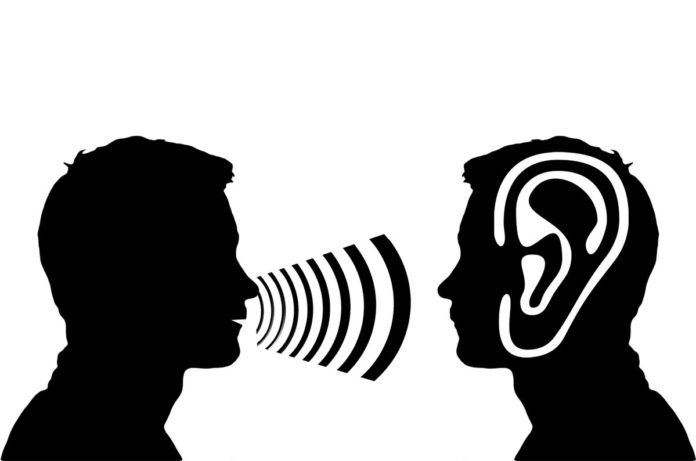
Remember playing “telephone” somewhere in your life. The key was to whisper a message to someone, and they pass it along. By the time it went around a circle the message was quite different than at the start. We face the same issue every day. The challenge is to be more intentional about communicating and listening. Active listening is a key to interpersonal communication.
Being an active listener includes giving full attention to the person talking. In Western society, eye contact is important to convey assurance that one is listening. Just as important are posture and mirroring. Listeners lean toward the speaker and even tilt their heads a bit. Reflective expressions show empathy and understanding. Active listening is not a conversation. Remember to concentrate on what is being said without determining the next thing to say.
Even with improved active listening we benefit from some tools or scripts to help us along the way to better communication. Below are three models that will help improve your communication at work and at home. Since many of us are spending more time at home these are tools that can be practiced with our family as well as co-workers.
Anticipate and manage conflict
Conflict is part of our human experience. Unfortunately, we haven’t mastered how to deal with it. Here are some ideas.
One simple practice is to set standards for communication. When a group/family sets basic ground rules it facilitates better communication in general and provides standards for conflict resolution. Agree on a maximum of four rules.
Sample ground rules might be: “Give full attention to the speaker,” “Be on time,” “Offer positive solutions instead of just complaining,” “Accept others; no idea is a bad idea,” and “Have fun.” Keep it as simple as possible. When you agree before a conflict occurs it is much easier to manage during conflict.
As a reminder post your ground rules. They can be printed on a card in front of each person or posted on the wall on poster board or on the refrigerator at home. Being respectful of each other is a strong component of good communication. Here are six steps to resolve conflicts followed by the Four-Part Apology.
Prepare and Commit
Anticipating conflict, planning alternatives and asking for commitment from everyone will mitigate the depth of conflict. Knowing that there will be disagreements and preparing for them helps everyone feel more comfortable when it happens.
Gather Information
Make no assumptions. Ask questions and listen for detail. Reserve judgment until you have all the information. We often jump to conclusions that are based on emotions not facts. This only makes conflict more difficult to resolve. Know everything before making decisions. Avoid making anyone wrong.
Consider Outside Influences
Determine what else is going on. Is someone hungry, sick, depressed or what? This is discovered when you gather all the information.
Perceptions and Emotions
We each interpret our experiences based on our personal history. Our perception is our reality and that is different for each person. Often in times of conflict we are driven by our emotions, which causes conflict to escalate.
Blame, Fear and Denial
Blaming is judgment without information and it’s easy to do. Many people fear facing conflict, so wait too long before resolving it. Denial that a problem exists only contributes to the problem spiraling down.
Debrief
The only way to grow from our experiences is to reflect on them. By spending time debriefing a conflict with all parties the better prepared we are for the next one. Talking about a situation when cooler heads prevail is invaluable to the process.
Four-Part Apology
Reduce anger and resentment by practicing this model.
Acknowledge: Take responsibility for your actions and behaviors. Use “I” statements. Examples: “I acknowledge that I hurt your feelings when I said those things about you.” … or … “I acknowledge that I borrowed your iPad without asking.”
Apologize: Acknowledge the “cost” to others. If unaware of “cost” then ask. Examples: “I apologize for hurting you and I realize that I may have harmed our relationship.” … or … “I know that I must have caused some damage, can you help me understand what that damage was? …. I apologize for XXX because it hurt you.”
Make it Right: Ask, “What can I do to make it right?” … or … “I want to do something to help maintain our friendship.”
Recommit: Make a commitment to not having the same behavior again. Examples: “I agree to speak with good purpose.” … or … “I agree to ask before I borrow anything from you.”
The words “I apologize” are much more powerful than “sorry.” Using the Four-Part Apology demonstrates that you’re taking responsibility for your actions. When the people in your life realize that you’re willing and able to do that, they’ll be more open and trusting with you. You’ll be surprised how well it works. It’s awkward at first and using the script makes it easier.
Affinity Activity
This process is amazing. You become a better listener and get a compliment at the same time. Accepting compliments is difficult. By responding to each prompt with a simple “Thank you” and no more opens up communication after the process is complete. Do this at least three times with one other person before stopping. You’ll have lots to talk about after and you can practice active listening. Bonus! You’ll get to know someone even better than you ever thought you could.
- Tell me something I don’t know about you?
- Thank You.
- Tell me something we agree on?
- Thank You.
- Tell me something you like about me?
- Thank You.
Practice each of tools and they become easier to use and even more powerful. Call me if you need ideas how to implement.
Doug McPhee, M.Ed., is founder and CEO of Coast to Coast Consultare, Inc. This Washington state-based multi-faceted training and development firm provides training and instructional design in accelerated learning for businesses. McPhee can be reached at 760-612-3297 or by email at dougmcphee@mac.com.



